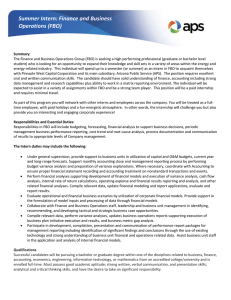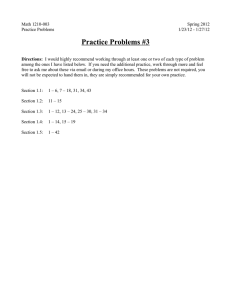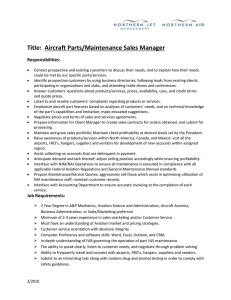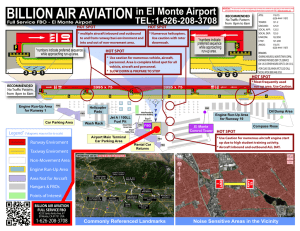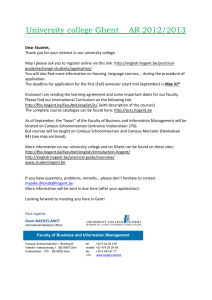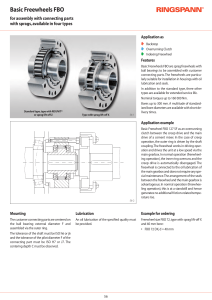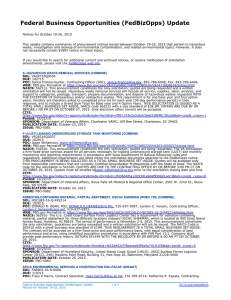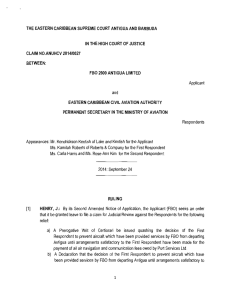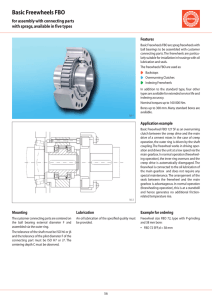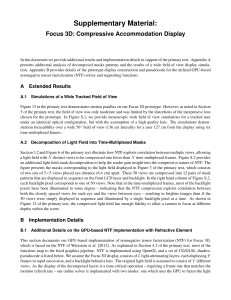Building Long-Term Profitable Customer Relationships
advertisement
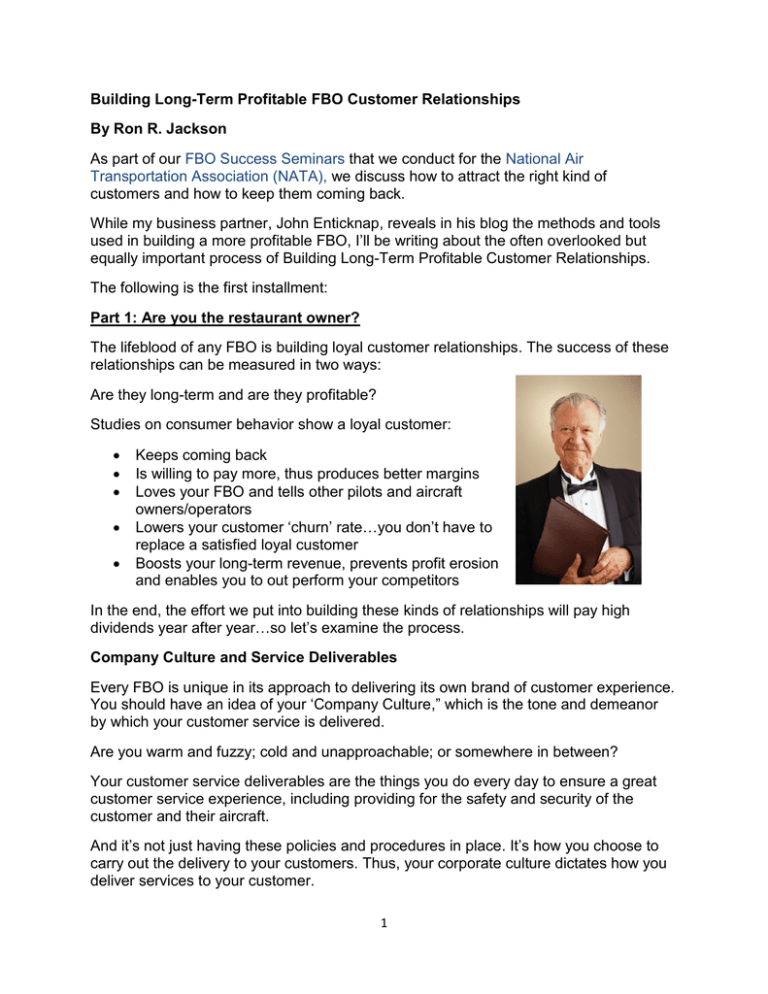
Building Long-Term Profitable FBO Customer Relationships By Ron R. Jackson As part of our FBO Success Seminars that we conduct for the National Air Transportation Association (NATA), we discuss how to attract the right kind of customers and how to keep them coming back. While my business partner, John Enticknap, reveals in his blog the methods and tools used in building a more profitable FBO, I‟ll be writing about the often overlooked but equally important process of Building Long-Term Profitable Customer Relationships. The following is the first installment: Part 1: Are you the restaurant owner? The lifeblood of any FBO is building loyal customer relationships. The success of these relationships can be measured in two ways: Are they long-term and are they profitable? Studies on consumer behavior show a loyal customer: Keeps coming back Is willing to pay more, thus produces better margins Loves your FBO and tells other pilots and aircraft owners/operators Lowers your customer „churn‟ rate…you don‟t have to replace a satisfied loyal customer Boosts your long-term revenue, prevents profit erosion and enables you to out perform your competitors In the end, the effort we put into building these kinds of relationships will pay high dividends year after year…so let‟s examine the process. Company Culture and Service Deliverables Every FBO is unique in its approach to delivering its own brand of customer experience. You should have an idea of your „Company Culture,” which is the tone and demeanor by which your customer service is delivered. Are you warm and fuzzy; cold and unapproachable; or somewhere in between? Your customer service deliverables are the things you do every day to ensure a great customer service experience, including providing for the safety and security of the customer and their aircraft. And it‟s not just having these policies and procedures in place. It‟s how you choose to carry out the delivery to your customers. Thus, your corporate culture dictates how you deliver services to your customer. 1 Draw from Your Own Experience Observe the workings of your favorite local restaurant (not the chains). If you frequent one particular restaurant, chances are the host/hostess knows your name; the server knows your favorite drink and meal. “The usual, Mr. Jones?” Chances are the owner or manager is on-site and makes the rounds of the tables, checking on the quality of food and service and personally thanking the customers for their loyalty. And chances are you have a consistent dining experience and recommend the restaurant to your friends. Another experience to draw from is when someone moves into your neighborhood. Chances are you or someone will recommend the following: Favorite barber/beautician Favorite car mechanic or service station Personal doctor/hospital system Favorite grocery, hardware store or clothing store Plumber , electrician, pest control company Church or social club Insurance agent, dry cleaners, etc. Why do we recommend? Never underestimate the power of „RECOMMENDATION‟. We do it all the time without really paying much attention to the impact it has on our lives and the decisions we make. For most of us, when we recommend a product or service it‟s really a way of validating our own process of selection. We all think we make good choices and having someone else follow our recommendation is affirmation…it boosts our ego… makes us feel good! We recommend because: Their product or service is excellent We‟ve always had a good experience We trust them, they offer good value They boost our ego, they know our name They may even know our children‟s names, their birthdays You may even consider them a friend 2 That‟s how we should view and nurture every FBO customer relationship we cherish…knowing each customer has the power to cast a vote…the power to recommend. An Investment in Time Building long-term customer relationships is a process. It‟s an investment in time. It‟s hands-on customer care and a commitment to understanding a customer‟s needs, wants and desires. At the end of the day, ask yourself, are you the restaurant owner? Have you made the rounds to the customer lounges, asked if everything is alright, and thanked the customers for their business? Have you taken the time to check your FBO for cleanliness; listened to how your employees treat a customer; and walked the flight line? Lead by example. If your employees see you do this, then chances are they will also take ownership…ownership of the customer service experience, thus helping build longterm profitable customer relationships. Ultimately, you should be able to go up to any customer and ask the question: Would you recommend our FBO to other pilots, aircraft owners/operators, and schedulers and dispatchers? If the customer is hesitant to answer the question and doesn‟t say yes right off the bat, you have some work to do. First published on www.ACUKWIK.com, FBO Connection Ron R. Jackson: Ron is co-founder of Aviation Business Strategies Group (ABSG) and president of The Jackson Group, a public relations agency specializing in aviation and FBO marketing. He is an instructor for the NATA FBO Success Seminar series along with ABSG founder John Enticknap. Ron has held management positions with Cessna Aircraft and Bozell Advertising and is the author of “Mission Marketing: Creating Brand Value”; co-author of “Don’t Forget the Cheese!” the ultimate FBO Customer Service Experience; and writes an industry blog for ACUKWIK‟s FBO Connection: Sage Advice for the FBO Community. ron@thejacksongoup.biz 3
